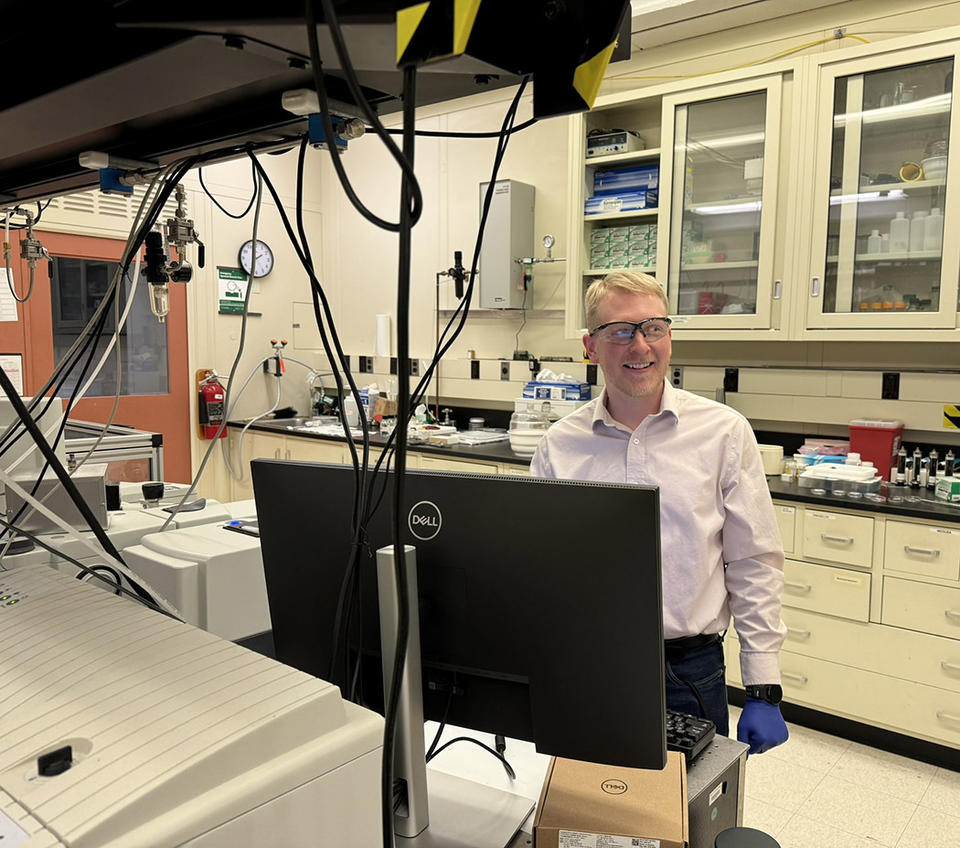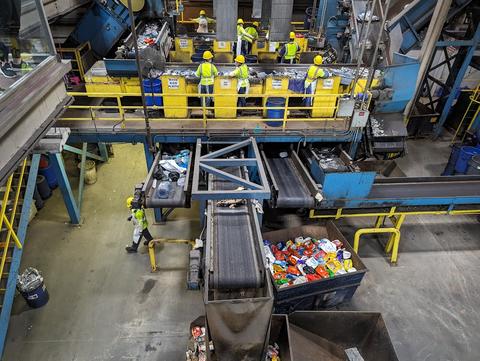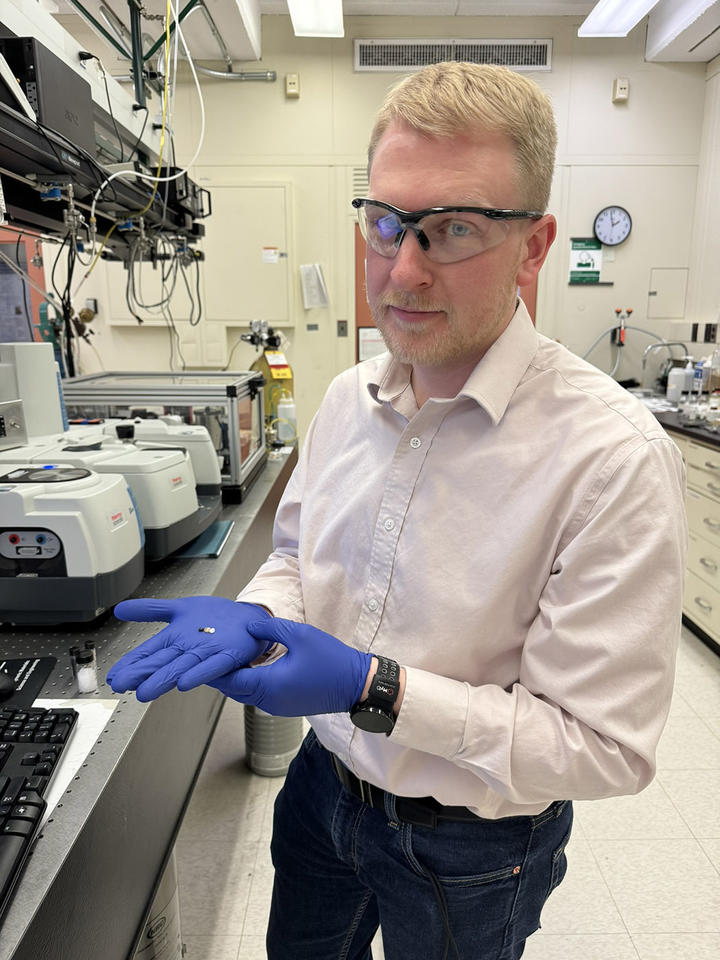Taking Measure
Just a Standard Blog
From Trash to Cash: How AI and Machine Learning Can Help Make Recycling Less Expensive for Local Governments

Recycling costs local governments a lot of money, but AI can help make that process less costly — potentially leading to more recycling. NIST research is looking to make recycling more efficient and less expensive.
What happens to your plastic recycling after you toss it in “the bin”?
This question seems to be in the news a lot lately (see here, here or here).
In truth, the answer is complicated. It depends on where you live and what that plastic is.
Collecting recycling costs local governments a lot of money. They need to maintain facilities to handle the plastics as well as the trucks and bins to collect them. Governments also need to hire people to do the work. It can be a lot cheaper to just put everything in a landfill.
However, when local governments recycle, they can turn trash into cash if they have the correct infrastructure. They can offset some of the costs by selling the collected plastic back to manufacturers. Most manufacturers want recycled plastic that is almost as good as brand-new plastic, but that requires careful sorting by the recyclers to provide a consistent product.
For many people, all plastic seems the same. However, those with a keen eye know that there are seven types of common plastic. You can identify them by the little recycling symbol on the bottom of almost all plastic containers. These numbers help identify the chemistry behind those plastics. You may have noticed them when sorting your own recycling.
Below is an explanation of some of these materials:
| Material | Common Uses | Recycling Label |
|---|---|---|
| polyethylene terephthalate | soda bottles, recyclable water bottles | 1 - PETE |
| high-density polyethylene | milk bottles, detergent bottles | 2 - HDPE |
| polyvinyl chloride | pipes, shower curtains | 3 - PVC |
| low-density polyethylene | grocery bags, sandwich bags | 4 - LDPE |
| polypropylene | takeout containers, yogurt cups | 5 - PP |
| polystyrene | disposable coffee cups | 6 - PS |
| other | safety glasses, DVDs, many reusable water bottles | 7 - Other |
Sorting these plastics is incredibly important. Different plastics with some similar characteristics often can’t be mixed because they require different melting procedures.
Take PVC, for example. Used in everything from plumbing to window blinds, PVC creates a strong acid with many industrial uses when melted. But like many other acids, it’s not something you want to make when you’re not expecting it.
Polyolefins, the group of plastics that includes HDPE (used in milk bottles), LDPE (used in plastic bags) and PP (used in takeout containers), provide a much tamer example. This group of plastics makes up about 40% of the world’s plastic production. They’re also some of the hardest to sort.
The type of plastic used in milk bottles requires high temperatures to melt and reprocess due to its crystalline structure. However, if plastic bag contaminants are in the mix, the bags will degrade at those high temperatures. So, if a plastic bag gets into the recycling mix with a milk bottle, it could lead to a gross, yellow milk bottle that no one wants to drink from. This processing risk is one of the many reasons you’re unlikely to see any milk bottles made of recycled plastics.
Additionally, if some high-temperature stable materials from takeout containers end up in a plastic bag process line, you’re likely to see clogged-up machinery.

Theoretically, you can easily sort plastic waste by using the little recycling symbol. Then, you can sell those sorted plastics to secondary recyclers, who will turn that sorted waste into products.
The price depends on the assumed purity of the plastic. A bale of large, orange laundry detergent bottles is likely to sell for a high price because it is easy to pick those items out. However, a bunch of takeout containers can easily have a mix of plastics with various colors or additives.
At the local recycling facility in Montgomery County, Maryland, people hand-sort laundry detergent bottles, food containers and more. However, human hands and eyes can only move so fast, and mistakes are easy at that speed. So, recycling facilities focus on sorting high-value or easy-to-identify plastics to have consistency in what they are selling to secondary recyclers. That means detergent bottles and beverage containers are recycled at high rates. Your plastic “silverware” and old children’s toys are probably not.
To help facilitate sorting, our work at NIST has been focused on using near-visible infrared light (NIR), a technology that can look at plastics and rapidly tell us what they are. Some top-of-the-line recycling facilities already use lights or cameras that “see” using this approach and sort soda bottles from PVC piping.
But these systems can't sort everything, and the focus of my research is to create a method to help sort the trickiest of plastics in a way that will be profitable for recyclers.
How We’re Making Recycling More Efficient
With that in mind, our team looked at this NIR approach and decided to improve it with some help from machine learning algorithms and other scientific techniques.
In infrared spectroscopy, you shine light from several different wavelengths on some molecules. Those molecules absorb some of the energy from that light based on the wavelength and reflect or transmit the rest.
One way to think about it is with flowers and color. When the many wavelengths of light in sunlight shine on a red rose, for example, the rose is excellent at absorbing every wavelength/color except for red. The red light reflects off the petals, and that is why roses look red to us.
If we know what colors and light intensity we are shining on a flower or plastic bottle and what colors/intensity we get back, we can use the difference like a fingerprint to identify more of those flowers or bottles.

Using machine learning, we can find the NIR fingerprints for many plastic materials. We then “train” the computer to identify the plastic based on how similar the new NIR signal is to the NIR signals of other plastics. This training helps the technology identify the material in a soda bottle, know that it’s different from the makeup of a takeout container, and separate them accordingly.
In our first paper, we used machine learning to connect our plastic signals with certain properties, like how dense and crystalline the polyethylene was. Normally, you measure density by weighing the plastic in different liquids and comparing the difference. It’s a very slow and tedious process.
However, we show that you can use reflected light to find out almost the same information — much more quickly. And on the recycling line, time is of the essence.
You can apply this approach to both large and small samples, too. It’s cool because it demonstrates that we can pull a lot more information out of these light-based measurements if we set things up carefully.
This is still very preliminary work and doesn’t yet apply to all types of plastics. So, it’s not like we can shine a light on any plastic and know its exact characteristics, but it’s an exciting start. It could save both recyclers and manufacturers a lot of time and effort with quality control steps if we can scale it up.
With that work published, I’ve been digging into the best ways to handle all the data we get from these measurements. You end up having very different-looking data based on the shape of the plastic, whether the sample is in pellets, a powder or a bottle.
This is because the light still gets reflected, but it gets reflected in different directions depending on the shape of the plastic. Think of the reflection on a clear pond versus on a pond with many ripples. Then, you can add colors and preservatives that have the potential to really change the signal. It doesn’t make the data wrong, but it can influence the sorting. Think of it as the difference between sorting black-and-white photographs of people and sorting black-and-white photographs, color photographs, caricatures and paintings of those same people.
To combat this, the team has been trying to expand our dataset, while I look at mathematical corrections to put powders, pellets and colored plastics on the same playing field. If we can accomplish that, it will become significantly easier to use machine learning to identify which plastic is which.
To make this research more broadly useful, I’m working to show that we can sort those troublesome polyolefins. With my current methods, we are achieving 95% to 98% accuracy when sorting these plastics. We’re doing this with a process that almost any NIR-equipped recycling facility could start using very rapidly if it wanted to.
Many recycling facilities are probably already using similar algorithms, but this work provides an extra level of refinement that really focuses on the tough-to-sort polyolefins.
If we can sort those effectively, we can reuse them with fewer processing problems, and recycling will become much more profitable. Then, hopefully, the profits can drive even better recycling habits, and we can start bending our linear economy into a circular one.
Recycling as a Puzzle to Solve
I’m a problem solver, and I hop from one puzzle to the next.
In addition to polymer research, I’ve worked on drug delivery systems for ovarian cancer, and now I’m working with artificial intelligence (AI) and machine learning.
I love the good that I get to do while solving complex puzzles. Sustainability and bio-friendly materials have been a nice thread throughout my research career.
You may not initially realize the connection between biomedical research and plastics. But drug delivery systems can help make really cool materials with applications outside the medical space. The plastics work can also enhance our understanding of our bodies in areas such as DNA, proteins and collagen.
And now, with the explosion of AI, we have new tools to conduct materials research faster and more effectively. It’s a very exciting time to be in this sustainable materials space!
Future of Sorting Research
I’m currently finishing up my two-year contract at NIST, and I’m looking for the next puzzle to solve.
However, I plan to stay connected to NIST as an associate to help other researchers use my techniques.
I hope to help the greater recycling community use data analysis to improve our recycling and help clean up our planet.
World Metrology Day is coming up on May 20, with the theme of sustainability. Using AI to help us recycle more efficiently is one of many NIST contributions to creating a healthier planet. Learn more:
About the author
Related Posts
Comments
Hello Brad
When i lived in Oslo, Norway they had the best recycling system i have seen. Although the population helps by sorting trash into 5 different containers; solid food waste, plastic bottles can be return to the stores for credit, metal (cans etc.), paper (all paper has it's own bend) and glass (they also have their own bend). But all children take trips to the recycling facility to see how it is done and it is amazing how they do it. All trash whether recycled or not is placed on a conveyer belt and items are off loaded based on weight and size. It really makes it easy for the recycling facility which is run by the government, because all of the citizens participate "willingly". They are very concerned about waste disposal. I really appreciated their effort in this area. Just wanted to share. Maybe you are familiar with their system. Thanks






Is there recycling of old buildings that were piezo steal parts of old power grids that used infrared. Most were burn outs uncontrollable as soon as they were started. Stopped building them in 1950, I assume they built a more accurate sensor. Deconstruction of the inefficient radiation fire prone grids would probably improve modern calculations of gravity.